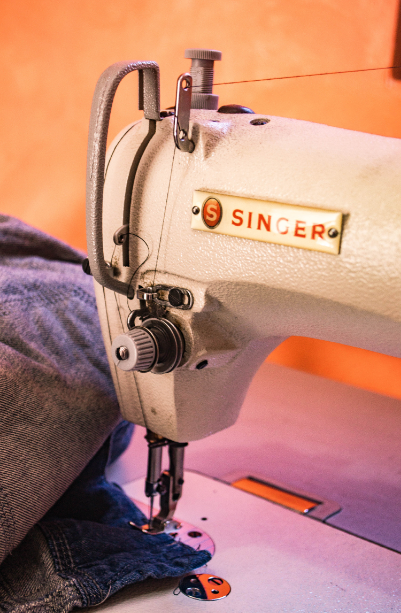Tailor Talk Part 3: To Taper or Not To Taper?

Tailor Talk Part 3: To Taper or Not To Taper?

Erin Gray
Erin Gray (Pronoun: she/her) is a Portland, OR based writer with an affinity for working behind the scenes with companies that offer something unique to their market. When she’s not writing, she likes to roam around mossy hiking trails, wear leather hats, and build stuff. You can find her on instagram @rawhidelaces or email her by clicking on the little envelope below:
This week’s post is long overdue and covers a topic that came up in the comment section of our previous post about pants hemming (aka shortening inseams):
“Here’s the problem- when you hem a pant leg that is tapered, you end up with a leg hole that is larger than ideal. Slim fit jeans end up looking like boot cut... You can’t just cut 6 inches off of your pants legs and expect them to look right.”
We gotta say, this commenter has a point!
Side Note: To all the tall commenters on that same post asking us to offer longer inseams, we totally hear you! We’d love to be able to do that. Stay on the email list because when we get there as a company, we’ll be the first to let you know!
Now, back to the hemming problem...
Yes, hemming can change the taper of your pants.
So in this very post, we’re going to talk about the awesome alteration that is tapering and how to tell if it’s needed when you get a part of pants hemmed.
Tapering 101
When it comes to pants, the taper refers to overall pant leg circumference and how closely the pant leg falls against your leg.
Ultra-tapered “Skinny” jeans (with a slim, close fit below the knee) have been in for awhile now, and we’re also big fans of the slightly less tapered “Slim-straight” cut:

These more tapered cuts start out with the tightest leg circumference around the ankle and get progressively wider moving up the leg. The effect is a form-fitting cut.
“Straight” cut jeans sit right in the middle ground. Same idea as slim-straight but with even less tapering.
“Boot cut” jeans don’t have much tapering at all around the ankle, with enough room to theoretically accommodate the tall shaft of a boot. If you like your jeans less form-fitting, boot cut is a great way to go.
“Wide leg” jeans are on the complete opposite end of the spectrum from skinny jeans. They have little to no tapering at all, and may even start out wider at the ankle than anywhere else on the leg.
Overall, tapering is synonymous with sophisticated, which is why you’ll see it everywhere from jeans to chinos to suit pants.
If you have a wider frame, it can seem logical and proportional to get pants with wider legs, but a tapered cut below the knee has a lot of advantages when it comes to creating a sleek and sharp look.
When a look is said to have “clean lines” (which is a pretty nice compliment) there is usually a fair bit of tapering going on.
The Problem with Hemming
When you get a pair of pants hemmed to shorten the inseam, it’s possible to throw off the taper of the original leg.
For example, if you hem a pair of slim-straight jeans, the hemming process removes the bottom part of the leg with the closest taper. So the new taper you end up with at the ankle is slightly wider than it was before and that can throw off the proportions of your look (this is especially relevant if you’re someone with a smaller frame).
But it’s important to note that hemming a pair of pants doesn’t always mean adjusting the taper as well.
The crux of the issue here is how much length is being removed.
Conventional wisdom says that if you are removing 2-4 inches of material (the same amount as if you cuffed the leg twice with a relatively slim cuff) then it’s possible the taper won’t be changed so dramatically as to need alteration.
But if you are removing more than 4 inches of material, it’s likely to be worth getting the taper altered as well.
How to Tell If You Need Tapering
The fastest and easiest way to tell if you’re going to need tapering as well as hemming BEFORE you head to the tailor is to cuff your pant legs and examine them in the mirror.
Stand barefoot on a hard floor in your pants that are too long and make one large cuff so that the new edge of your pant leg just grazes the floor.
Head back to this post for help to figure out if your pants need hemming.
Once you’ve got the length figured out, observe the new width of your pant leg at the ankle.
Is it wider than your preference? Then tapering is called for.
The next step happens at the tailor, unless you are handy with a sewing machine.
Luckily, you don’t have to be too picky with your choice of tailor for this fairly simple and standard alteration, and you can expect to pay around $20 for tapering (along with the cost of hemming).
Once you and the tailor have established how much length is going to be removed, ask them to “taper” or “tighten up” the width of the leg.
The tailor will then pin the pant leg to demonstrate how much width to remove, and you can visually judge for yourself what you want according to your personal preference.
Make sure to specify if you want the tapering only adjusted below the knee, or the entire leg.
As usual, we’re focusing here on alterations to tighten pant legs, not to loosen them, because unfortunately tailors can’t do much with clothing that is too small. So remember: when in doubt, size up!

4 comments
Yup, shorter inseams, please. Good quality jean. Surprised they’re made in Vietnam. Thought they were made in the US.
I’m one of those butches with big legs and big hips that prefers not to have tapered pants that just end up feeling like tights against my legs, especially after washing. Even boot cut is too tight. The Chinos I recently got are now unwearable post-washing because they’re just too tight. Can we just have a straight cut option in Chinos and jeans that then don’t require all these complicated hemming instructions? Thanks.
I don’t care to cuff my jeans. I’m 5’3” with a 30” inseam. Luckily short men have the same problem as short women. So I’m happy there are now plenty of sites to purchase mens pants in my size. Maybe one day Dapperboi will offer shorter inseams. All these mens sights Ashe & Erie, Bonobos, Taylor etc are making a killing.
Great blog. Being one with short inseam (29-30"), I often have to have pants hemmed. I also like the slim straight fit as skinny jeans can be just a bit too hard to get over my feet or to roll up. Having the length where tapering may be necessary is a great help!